On a balmy summer morning in Tokyo, Japan, over three thousand people stood outside the Tokyo International Forum waiting for a glimpse of what was claimed to “set a new futuristic standard for gaming.” A piece of software that would outpace and outclass anything that had come before. For the last month, the game had been teased online, alluded to in magazines, and was advertised on television, radio, and even the Yamanote train line before a single screenshot had been shown to the public. The hype was building, but the only way to know if this game could live up to such expectation would be to see it in person. What better way than being crammed into a theater with a thousand other die hard Sega fans?
Twenty five years ago, in a dark theater, a game that would define the Sega Dreamcast was announced to the world in spectacular fashion. Sonic Team had returned to its namesake, and was ready to finally show everyone what they had been working on: Sonic Adventure.
But was it enough? Not just for the Sega faithful, but for those who drifted away during the Saturn era? Could this be the saving grace of Sega on a worldwide scale, and establish the Dreamcast as the cutting edge of the gaming world?
It’s pretty safe to say that, in North America, the success of the Genesis was tied to Sonic the Hedgehog. There were plenty of great games on the system, but Sonic was unlike the rest. The original quintet were able to rival the Super Mario Bros. series on a level no other mascot character had even come close to. Sonic was everywhere – television, comic books, happy meals – and it seemed like Sega could just make 2D platformer after 2D platformer far into the future.
By 1996, however, the landscape of the game industry was changing. People were looking for new experiences, specifically games that embraced the third dimension. Part of that shift was driven by the innovation of Sega’s AM2 arcade division, with Virtua Fighter becoming critically acclaimed not just for its tight gameplay but also it’s state of the art polygonal design. It only made sense that Sega would continue to push the envelope of what a game could be, with Sonic the Hedgehog right there on the cutting edge. Players were ready to see Sonic make the leap to 3D, and for the battle between Sega and Nintendo to renew itself. After all, if any game could dare to compete with Nintendo’s upcoming Super Mario 64, it would have to be a Sonic game, right?
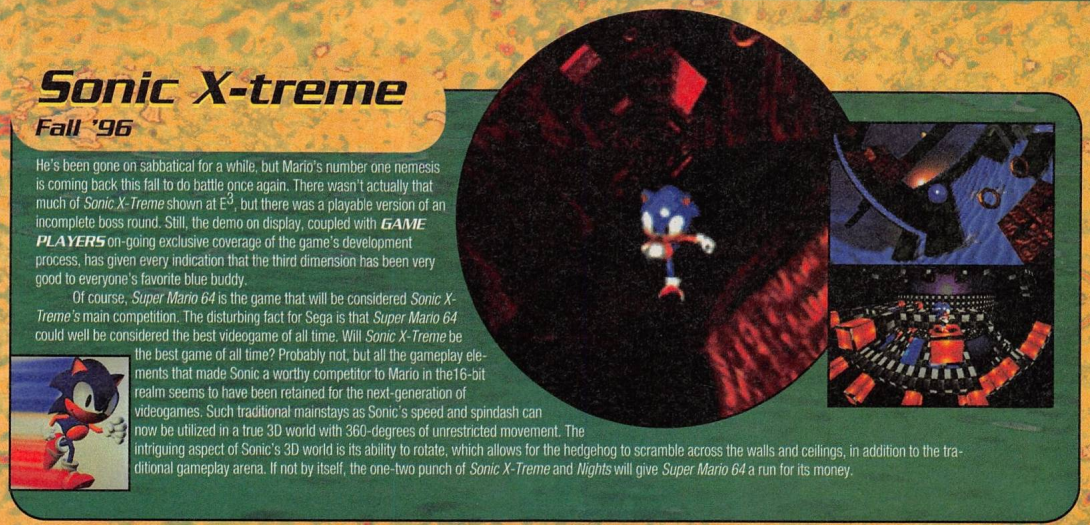
Coverage of E3 1996, from Game Players Vol. 9 No. 8
The Sonic series was coming up on its five year anniversary, and was still considered a leading brand in the industry. It hadn’t been that long since Sonic the Hedgehog 3 and it’s lock-on counterpart, Sonic & Knuckles, had been released. While there was the occasional fan complaint that those two games were simply “more of the same,” they were still commercially and critically successful. However, simply creating a “Sonic the Hedgehog 4” was never on the table. If Sega rested on their laurels and released a 2D game staring Sonic on the Sega Saturn, it would not have shifted units, especially in comparison to the looming 3D might of Mario.
Sega of America knew they needed a Sonic game in true 3D if they had any hope of salvaging the Saturn. From the moment the console had its surprise launch in North America, it struggled to find its audience. Allienanting retail partners, game studios, and considered too expensive by the consumer, the door was left wide open for the Sony PlayStation to become the new “cool” video game console, taking its place at the top. Sony was outselling Sega at every turn – at least in the west. Fortunes had reversed, with Sega of Japan enjoying newfound success based largely on the Virtua Fighter brand. While those games were critically well received in the west and enjoyed some success in arcades, they did not capture the imagination of the American consumer in the same way it had done in Japan.
But Sonic? Sonic could do it. Thus began a long development process that resulted in Sonic X-treme, Sega Technical Institute’s answer to SoA’s Saturn problem. But it wasn’t enough to just have Sonic on the cover. It needed to be cool, it needed to be ready by Christmas, and most importantly, it needed to be good.

Commentary on the yet-untitled Sonic X-treme, from Sega of America’s FY1997 Brand Review
- Back and forth re: Sonic and Mario
- Being down on E3…except for Sonic X-treme
E3 1996 was the first time consumers were able to see Sonic and Mario in action side by side. Some were excited. Others, not so much. From the outside looking in, most agreed that it was what Sega needed. Nearly every gaming magazine out there said there was potential in X-treme, even if it sometimes felt they just assumed it would be good because it was a Sonic game. Behind the scenes? Unfortunately, due to a series of bad decisions and events out of anyone’s control, the game was nowhere near where it needed to be something something. With Christina Coffin, the game’s lead programmer, falling ill, Sega of America’s dream of launching Sonic into the third dimension and saving the Saturn was over. On August 23rd, 1996, the game was officially canceled, leading to some confused Saturn owners.
- “Does anyone know why Sega has decided to put Sonic X-treme on hold?”
- “I wouldn’t believe everything Next-Generation reports.”
- Attempting to quell worries about X-treme’s cancellation
- Blaming everyone but Yuji Naka
- Holding out hope two months later
- Continuing to hold out hope
Some interpreted the news as simply being a delay. After all, a 3D Sonic game was such an obvious thing to make! The demand was there, their competitors were doing similar things with Mario and Sony’s Crash Bandicoot. But as months went by, it was clear that X-treme was over and done with. Instead, rumors began circulating of another team planning to make the next main Sonic title, a team that had some experience with the franchise…
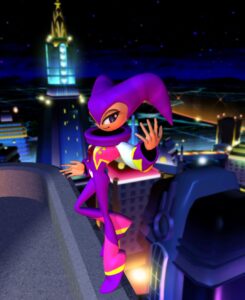 NiGHTS Into Dreams… was released on July 5th, 1996 in Japan. The latest game from Yuji Naka and Naoto Ohshima, it was the first released under the newly formed Sonic Team division at Sega of Japan. Highly anticipated, it was met with near-universal acclaim, and would end up being the game so many compared with Super Mario 64.
NiGHTS Into Dreams… was released on July 5th, 1996 in Japan. The latest game from Yuji Naka and Naoto Ohshima, it was the first released under the newly formed Sonic Team division at Sega of Japan. Highly anticipated, it was met with near-universal acclaim, and would end up being the game so many compared with Super Mario 64.
“It’s nightmare on Sony Street and bedtime for Mario’s N64. Sega of America, Inc. today unveiled the 3D flight-action title “NiGHTS,” a ground-breaking new Sega Saturn game featuring panoramic graphics and 360 degree flight and ground gameplay. “NiGHTS” is powered by Sega Saturn’s three 32-bit processors to deliver 3D worlds and characters rendered in realtime, producing a game experience never before possible at home.
Developed by “Sonic the Hedgehog ” creator Yuji Naka and the Japan-based Sonic Team, “NiGHTS” will revolutionize videogaming just as Sonic the Hedgehog did in 1991. Combining the dynamics of flight with the speed of racing, the Sonic Team has developed a “flight-action” title which provides unprecedented replay value and gaming excitement.”
With NiGHTS on store shelves, Sonic Team took a moment to gather itself, and begin to think about what was next for them. In August of 1996, the conversation moved towards Sonic, with Takashi Iizuka, lead designer of NiGHTS, proposing an RPG-esque Sonic with an emphasis on storytelling. Originally, Naka had wanted to wait five years between Sonic & Knuckles and the next Sonic project he’d undertake, but it wasn’t long before he was convinced that Sonic Team should tackle the idea of a 3D Sonic. What was the deciding factor? That’s hard to say. Maybe it was NiGHTS fans writing to Sega and asking what the heck a Sonic was. Maybe it was Sega preparing to develop a new video game console. Maybe it was just spite, Naka wanting to prove that only he could take Sonic into the future. Whatever the answer, early pre-production began.
The development of the next Sonic game from Sonic Team was kept under wraps, fans instead wondering what Sonic’s future held in store. The holiday season saw Sega of America pushing Sonic 3D Blast, boldly claiming in advertising that “Blue Is Back.” The game, designed for the Sega Genesis, was hastily ported over to the Saturn after the cancellation of X-treme, with some spruced up graphics and a new soundtrack. The true highlight, however, was the brand new special stage. Developed by Sonic Team, it gave people their first look at a polygonal Sonic the Hedgehog. For the Sega faithful, it was a clear highlight and a tease of what would come next. For the skeptical, however, it was not enough. Super Mario 64 would become the best selling game that holiday season, causing the Saturn to slip into third place in North America.
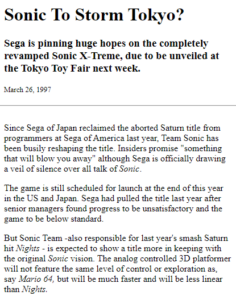
An article from Next Generation Online, reporting on Sonic Team’s rumored showing at the Tokyo Game Show
In the lead up to the Tokyo Toy Show, rumors started that Sonic Team was getting ready to announce something Sonic related. News outlets at the time assumed it had something to do with Sonic X-treme, but instead it was the announcement of Project Sonic – not a game, but a series of releases to bring Sonic back into prominence. The first of these, Sonic Jam, would be a collection of previous Sonic games while featuring the brand new “Sonic World,” an interactive museum one could explore by controlling a polygonal Sonic. Sega may have been coy about what was in store past phase one of Project Sonic, but most everyone guessed as to the true nature of “Sonic World.” This was a taste of the future. Suddenly, the idea that a new Sonic game would be on the Saturn didn’t seem so far out of reach.
Phase 2 of Project Sonic was the release of Sonic R, a racing title put together by the same studio that had made 3D Blast, Traveller’s Tales. Like the previous game they worked on, it was supervised by members of Sonic Team, but unlike 3D Blast it provided a true 3D experience. Well, sort of. Sonic and friends could explore the tracks, but it was still a racing game through and through. Fun on its own, it was still a tease for what was to come. And after so many teases, people were restless. Where was the next Sonic?
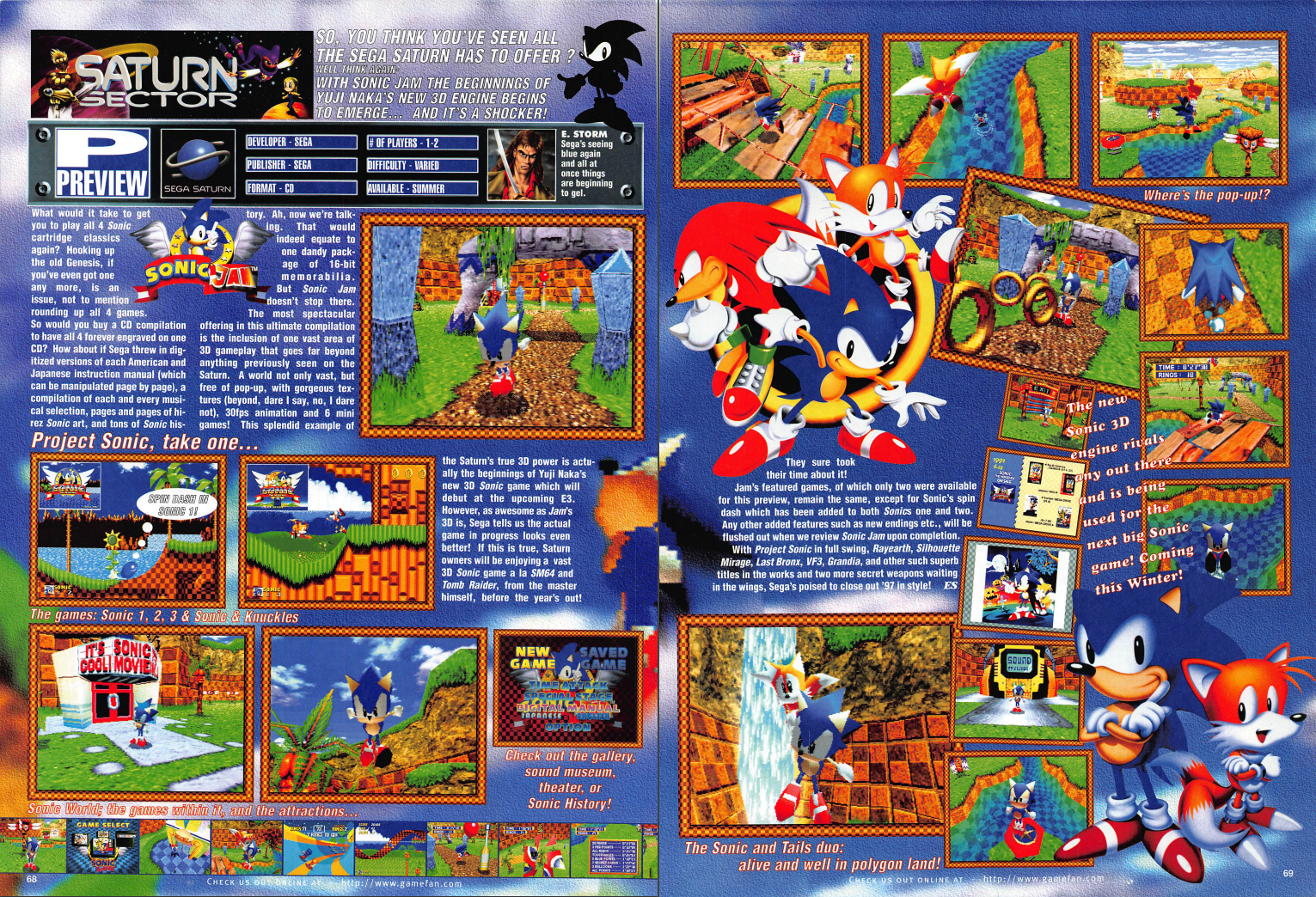
“This splendid example of the Saturn’s true 3D power is actually the beginnings of Yuji Naka’s new 3D Sonic game which will debut at the upcoming E3.” A preview of Sonic Jam, from GameFan Vol. 5, Issue 6.
Instead, Sonic Team’s Burning Rangers was released in February of 1998 in Japan. It would take another four months before it was released in the west, but by then, it was clear – the Sega Saturn was dead. Did that mean a new Sonic platformer, in glorious polygonal 3D, was also dead?
On May 21st, 1998, Sega held a press event where they announced the Dreamcast, a 128-bit powerhouse that would push gaming once more. It was here that the world got their first glimpse at the next Sonic in one very obvious way, and one not-so-obvious.
- Iri-san looking at the the buildings of Speed Highway
- A brand new Sonic rushes past Iri-san
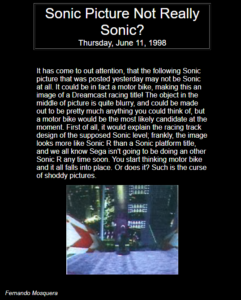 A couple weeks later, the news site SegaNet uploaded a photo they claimed was from the next Sonic game. Immediately, people argued that it was, in fact, not from the next Sonic game. The next day, Fernando Mosquera posted an update, stating that the blurry image could actually be from an untitled motorcycle game. The day after, using some “enhanced images” to outline the figure in the picture, they proclaimed “this proves beyond a shadow of a doubt that the picture has nothing to do with everyone’s favorite blue hedgehog.” It would only be a few months later that it was proved beyond a shadow of a doubt that the image was, in fact, not from a motorcycle game, but everyone’s second look at Speed Highway. It was a far different era of the Internet, of fuzzy pictures sent through 56k modems, where 640 x 480 resolutions were high definition.
A couple weeks later, the news site SegaNet uploaded a photo they claimed was from the next Sonic game. Immediately, people argued that it was, in fact, not from the next Sonic game. The next day, Fernando Mosquera posted an update, stating that the blurry image could actually be from an untitled motorcycle game. The day after, using some “enhanced images” to outline the figure in the picture, they proclaimed “this proves beyond a shadow of a doubt that the picture has nothing to do with everyone’s favorite blue hedgehog.” It would only be a few months later that it was proved beyond a shadow of a doubt that the image was, in fact, not from a motorcycle game, but everyone’s second look at Speed Highway. It was a far different era of the Internet, of fuzzy pictures sent through 56k modems, where 640 x 480 resolutions were high definition.
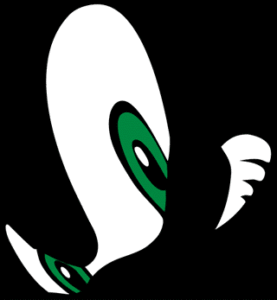 July 15th, 1998. Sonic Team finally broke their silence, uploading news on their next project. The game was given a name – Sonic Adventure – and with perhaps the first “announcement of an announcement” in Sonic history, the team revealed they would provide more information on August 22nd at a free presentation open to the public. Along with the title of the game, a single image was posted, a set of green eyes and a toothy grin on a black background. It was captivating, it was in your face, and it was mysterious. And for some, they didn’t know what to make of it.
July 15th, 1998. Sonic Team finally broke their silence, uploading news on their next project. The game was given a name – Sonic Adventure – and with perhaps the first “announcement of an announcement” in Sonic history, the team revealed they would provide more information on August 22nd at a free presentation open to the public. Along with the title of the game, a single image was posted, a set of green eyes and a toothy grin on a black background. It was captivating, it was in your face, and it was mysterious. And for some, they didn’t know what to make of it.
The first discussion on the game happened on the Japanese side of Usenet, with someone pointing out Sonic Team updating their website, and how the game would certainly be the centerpiece of the Dreamcast line-up. The first reply concurred. The second reply? Someone else wishing that a Shin Megami Tensei game would be released on the same day…
It wasn’t long before news reached the English-speaking side of the web, reports being posted on the major news sites of the day. For the first time since X-treme’s unfortunate end, there was concrete information on the next main installment in the Sonic series. And one pretty intense piece of wallpaper.
- Insane, evil, or both?
- Or just more cocky
- Or maybe an evil clone!
- Or maybe he’s just all dressed up
- But what if…the game ends up looking good?
Over the next few weeks, Sonic Team’s website would update with slivers of new information, intended to keep people interested before the big day. A clear shot of the logo, infused with the elements of the Earth. Commercials promoting the presentation, using CG animated footage of a flooding city. A demo version of “Open Your Heart,” the theme song of the game, in glorious 128kpbs mp3 format. A haunting silhouette of the new Sonic, enough to tantalize the mind. But perhaps the most interesting articles were a series detailing Sonic Team’s trip to South America.
On November 26th, 1996, six key members of the Sonic Adventure team landed in Cancun Mexico:
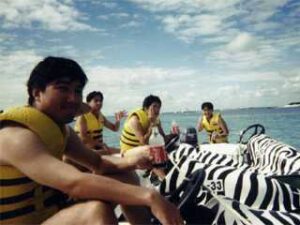
- Yuji Naka, Producer
- Takashi Iizuka, Director
- Kazuyuki Hoshino, Art Director
- Tetsu Katano, Main Programmer
- Hiroshi Nishiyama, Lead Field Artist
- Nobuhiko Honda, Lead Field Artist
Between riding zerbra patterned jet skis while drinking beer and enjoying tea made from coca leaves, Sonic Team dove deep into the culture that surrounded them, drawing inspiration that would shape the new locations and mythology of Sonic Adventure. Where was Ohshima? Back in Japan, directing Burning Rangers‘ early development. Once again staying behind as Naka traveled around the globe.
Each new post on the website built anticipation, August 22nd feeling so far away. How could one wait any longer? Much to Sega’s chagrin, we didn’t have to.
- Sonic in Lost World
- Tails in Speed Highway
- Sonic in Ice Cap
- Perfect Chaos in Station Square
On August 18th, a virtually unknown French website called Kamui Ten no Ryû upload four images, claiming they were from Sonic Adventure. Two with Sonic, one with Tails, and one featuring some monster no one recognized. Much like the “motorcycle image” from months ago, people weren’t sure what to make of them. A Sonic game couldn’t have leaked early, could it? And that last picture…surely that was from Godzilla Generations, right?
A handful of news sites put the images up, then just as quickly took them down. On Usenet, Daniel Andreas, the person behind the website, politely asked people to remove the images as Sega was not very happy.
- The scoop of the century…
- …until Sega asked to please remove them
Even with the request, some people were still skeptical on the authenticity of the images, with a couple taking some potshots, claiming that they just couldn’t be Dreamcast images. Only two days before the Tokyo International Forum presentation, however, one of the four images was uploaded to Sonic Team’s official website. Which? The most unlikely of them all, the mysterious monster. Was it always planned for that image to be uploaded prior to the event? Probably.
- “Real or fake?”
- Might be fake
- Mario v Sonic, round 9874865
The discussion on whether or not the images were the genuine article, or reflected the current status of the game, was to be over soon enough. Only a handful of days remained before the Sonic Adventure presentation, with some news outlets speculating that the two shows planned at the International Forum might need to be expanded to three.
Having a conference open to the public for a single game was already unheard of. But what about the people who couldn’t make it? The many fans around the globe who had been speculating and wondering what Sonic’s true leap into the next generation? Sega went one step further, partnering with video streaming website J-Stream. Long before the era of YouTube and Twitch, the idea of being able to watch something online, and in real time, was novel. This truly was the future – all you needed was RealPlayer 5.0, a stable Internet connection, and you were good to go.
August 22nd, 1998. Saturday. 10:00 A.M. The doors opened. Finally, it was time.
For those who were able to attend in person, they were gifted a t-shirt, character postcards, and a press sheet. If you had the money, you could indulge in some extra Sonic Adventure swag, including a pin set and a full color brochure, showing off every aspect of the game. With only an hour before showtime, surely some people rushed to Hall “A” to get a good seat, waiting until after they saw Sonic Adventure up close and personal before indulging in any extra souviners. Who could blame them?
August 22nd. 11:00 AM. The disembodied head of Shoichiro Irimajiri, President of Sega Enterprises Ltd., takes the stage. The demo that introduced the world to the Dreamcast plays as it did only three months ago, and when it finishes, the man himself appears behind a podium. He begins to speak:
“Usually, game production presentations are very restricted. They are only shown to the media people, but… Well… For something amazing as this, we’ve decided to show it to a much larger number of people. This is the first experiment for SEGA, and… In this large assembly hall, We will show it to all of you. Please enjoy the upcoming presentation to the fullest.”
After a bit more talk about the Dreamcast and the VMU, a now-familiar chime starts to play, the first notes that play during the opening cinematic of Sonic Adventure. A haunting pair of voices speak in unison, reciting a poem that would embody the game…
“Chaos is power, power comes from the heart.”
The animation begins, a city floods, and the first moment of Sonic Adventure in movement is shown – Sonic rushing down the first slope of Speed Highway. The same moment leaked months ago as a blurry screenshot, brought to life on the largest screen imaginable.
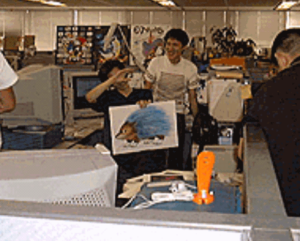 The two hosts of the program appear, Chris Peppler and Hamaya Yuuko, and guide us through the whirlwind of Sonic information. It isn’t long before Yuji Naka appears in true rock star fashion, emerging from some sort of sphere, smoke and flashing lights surrounding him. The story of Sonic Team’s trip is told in humorous fashion, with Naoto Ohshima and Yuji Uekawa getting screen time, even though they weren’t part of the expedition. Eventually, Takashi Iizuka arrives on stage, and plays the level Speed Highway in front of the audience, albeit with some homing attack trouble.
The two hosts of the program appear, Chris Peppler and Hamaya Yuuko, and guide us through the whirlwind of Sonic information. It isn’t long before Yuji Naka appears in true rock star fashion, emerging from some sort of sphere, smoke and flashing lights surrounding him. The story of Sonic Team’s trip is told in humorous fashion, with Naoto Ohshima and Yuji Uekawa getting screen time, even though they weren’t part of the expedition. Eventually, Takashi Iizuka arrives on stage, and plays the level Speed Highway in front of the audience, albeit with some homing attack trouble.
Following an extended video of the main characters of the game introducing themselves over a bevy of footage, Segata Sanshiro – the embodiment of all things Sega – arrives, leading the audience in a chant of Sonic’s name. A sound that would be forever be preserved in the final story of the game. Rounding out the show, Jun Senoue appears. Not yet the household name of Sonic fans far and wide, he jams on his Sonic Adventure guitar while vocalist Eizo Sakamoto belts out the lyrics, golden shirt half open.
At the end of the day, 15,000 people were able to see with their own eyes the promised future of gaming, with another untold number watching over the Internet. For those who bought the Saturn, waiting for Sonic’s return, it was everything they had been wishing for. For many on the fence, it was enough to make them start saving up for a Dreamcast. As for the general public? It was likely the first time in a while that Sonic would grace the cover of a million gaming magazines.
- Initial reactions, posted on Gaming Age
- “Return of the Hedgehog Part 2,” from Sonic HQ
- From Seganet.com’s Mailbag, August 31st, 1998
- From Seganet.com’s Mailbag, September 28th, 1998
- “Did you see Sonic Adventure?!”
- RealPlayer woes
- Adventure excitement
- More Adventure excitement
- “How the hell are we supposed to look at anything on the PSX?”
Of course, not everyone was immediately sold on Sonic. Some were sill weary about Sega’s ability to manage itself, having been burned one too many times. Others were not quite ready for this new take on their favorite video game mascot.
- Wondering if Sega can pull it off
- Wait, where does Sonic live, again?
- Sonic’s eyes are fine
For the most part, the reveal of Sonic Adventure was a resounding success. For the first time in what felt like forever, Sega was back in the spotlight for all the right reasons. The Saturn may have died far too early, but its successor was off to a promising start. The game would be released four months later in Japan, while the west would have to wait until autumn the following year to get their hands on it. Was it enough? For many Sonic fans, yes. For a whole new generation whose first game was Adventure, definitely. For the general video game audience…well, that’s a much longer story, isn’t it.
…it didn’t say “Choose Your Partner,” Dav. It said “Choose Your Buddy!” And that was text that didn’t even stick around for the final release of the game! Oh well, I guess you were tired…
…oh hey, did you know that UK: Resistance put up a fake Sonic Adventure screenshot before the game was announced, but also admitted it was a fake the moment they posted it? You do now.
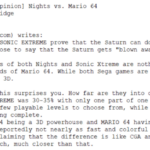
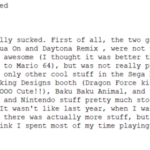
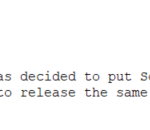
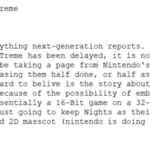
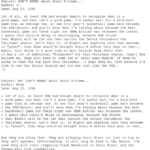
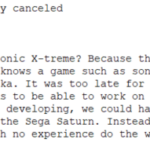
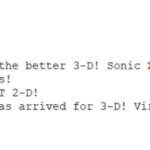
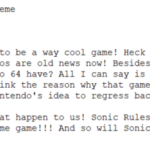
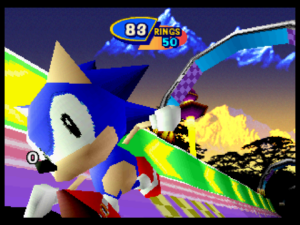

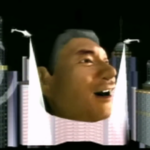
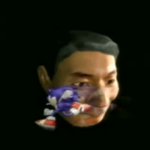
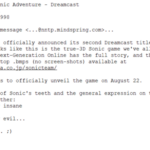
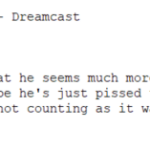
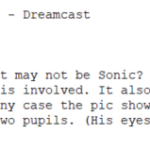
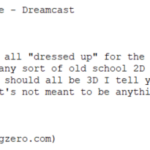
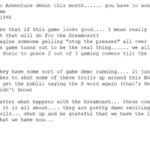
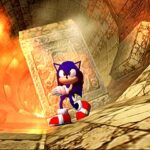
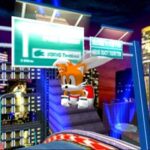
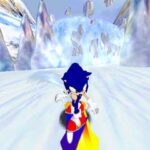

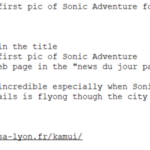
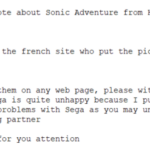
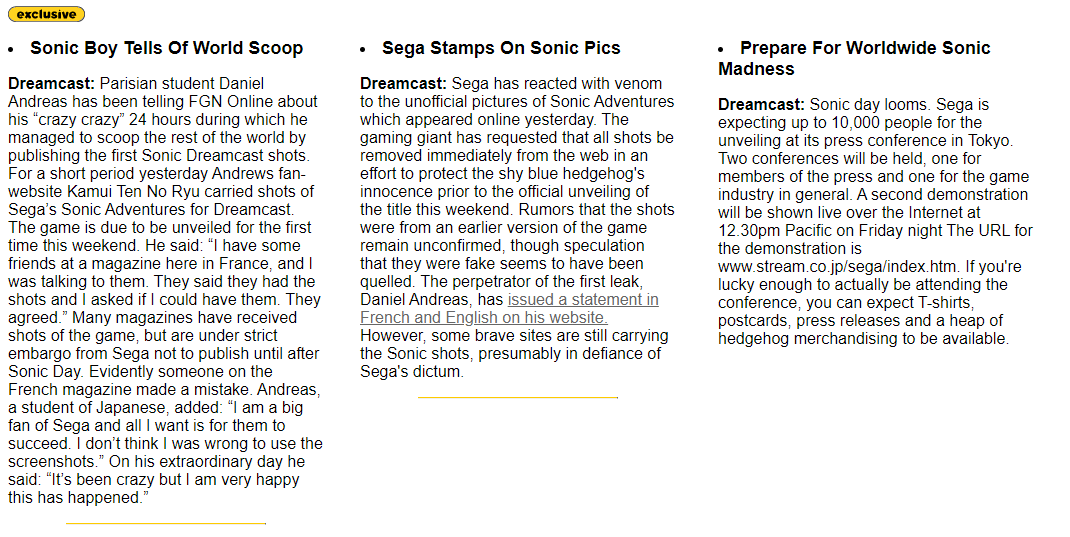
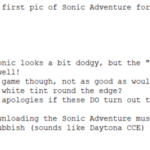
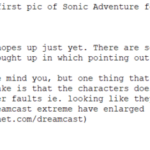
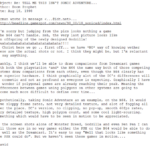
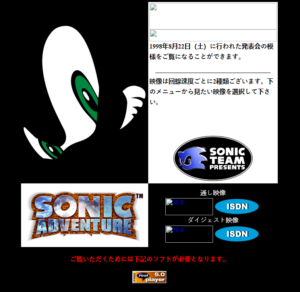
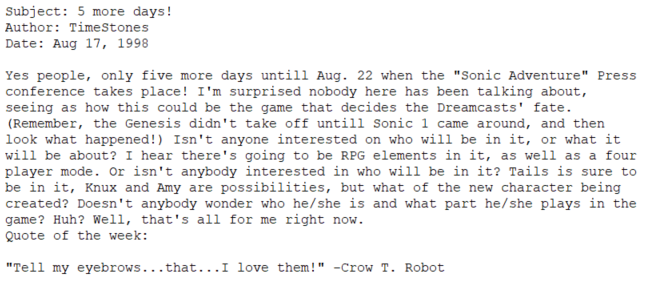

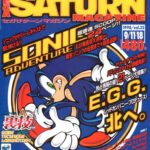
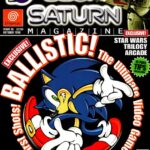
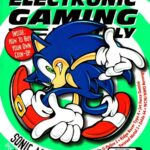
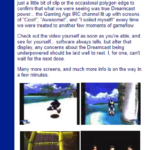
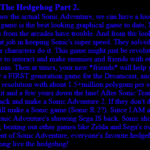
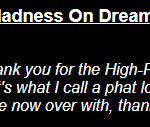
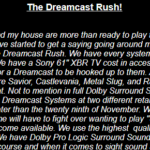
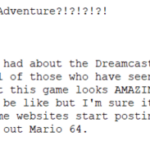
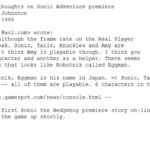
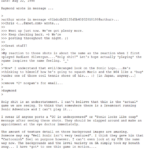
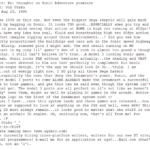
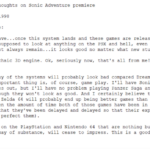
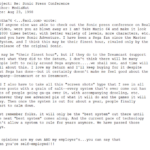
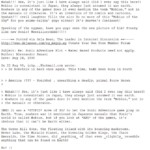
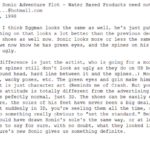
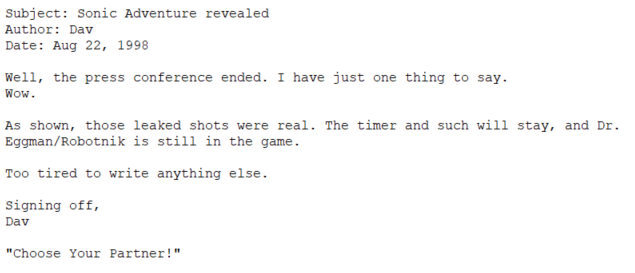
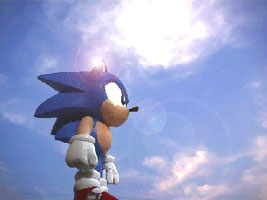
No Comments